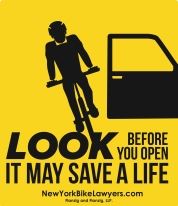By MATT FLEGENHEIMER
Published: September 26, 2012
For years, the New York City Transportation Department has held a trump card in the roiling debate over its many roadway interventions: When officials said the measures, like pedestrian plazas and bike lanes, had made streets safer, the numbers appeared to back them up.
But the release last week of theMayor’s Management Report, a twice-yearly collection of city measures, revealed a disquieting figure. Traffic fatalities from July 2011 through June 2012 were up 23 percent from the previous year — to 291, from 236. It was the first increase since 2007, when there were 310 traffic fatalities,
Though overall crashes fell slightly for the second straight year, 176 cyclists or pedestrians were killed in crashes, up from 158 the previous year. The other 115 deaths were motorists or their passengers, a sharp rise from the 78 drivers and passengers killed the year before.
The Transportation Department typically compiles figures for the calendar year, Commissioner Janette Sadik-Khan said, so the agency wanted “to reconcile what’s going on.” She allowed, however, that “it does look like there’s a rise.”
According to the Mayor’s Management Report, speeding, driving while intoxicated, and running red lights or stop signs accounted for a combined 54 percent of motorist or passenger fatalities. The report said a preliminary analysis suggested that the crashes were concentrated on highways, far removed from many of the areas that have been the focus of the city’s initiatives.
But the numbers appear to have caught officials and transportation advocates by surprise.Councilman James Vacca, the chairman of the City Council’s transportation committee, said the results had compelled him to “question the accuracy of the previous years’ figures.”
“Certainly if we get this result next year, I think we have to look at many of the reconfigurations to see if they’ve been positive,” Mr. Vacca said. “We’ve been led to believe that things in the last several years were getting much better.”
The Bloomberg administration has not hesitated in past years to attribute declines in traffic fatalities to its own initiatives. “The reduction in traffic deaths as a result of our safety engineering means nearly 300 New Yorkers are alive today who would not have been if we had simply sustained the fatality rate of five years ago,” Ms. Sadik-Khan said in December, as the city announced a record low in annual traffic fatalities for the 2011 calendar year.
The department maintained this week that recent measures had made streets safer. Ms. Sadik-Khan said the rise might have been caused, at least in part, by an increase in distracted driving and distracted walking.
“I don’t think that the iPhone has invented an app yet that will ping you when you hit a crosswalk,” Ms. Sadik-Khan said, adding, “That breakup text can wait.”
There is no data to suggest that distracted driving and walking have become more pervasive in the city over the past year than in previous years, though Ms. Sadik-Khan said national trends suggested that the practices had grown more common. (Overall traffic fatalities did increase nationally for the first quarter of 2012 by 13.5 percent, compared with the same period in 2011, after five consecutive years of declines, according to the National Highway Traffic Safety Administration.)
Ms. Sadik-Khan said she had even “saved three or four people” from walking into oncoming traffic herself, grabbing them as their heads remained bent down toward their phones.
“Two of them were thankful, and two of them were, frankly, annoyed,” she said.
The department said that figures detailing pedestrian or cyclist deaths alone over the past year, as opposed to the aggregate figure for pedestrian and cyclist deaths, were not available.
The traffic data appears more encouraging when set against figures from past years, before the city experienced its recent sharp decline in annual deaths. There were 243 traffic fatalities in the calendar year 2011, about a 38 percent reduction from 2001.
Last week, the city announced plans to stencil the four-letter exhortation “LOOK!” along curbsides at more than 100 of the most-dangerous intersections.
On Tuesday, the city said that the campaign would be extended to taxicabs, and that drivers would be encouraged to place decals in their back-seat windows with a similar warning. It is an effort to curb so-called dooring accidents, when a car door is opened into the path of a cyclist.
The announcement on Tuesday came five hours after a 38-year-old cyclist was struck and killed by a vehicle on Queens Boulevard in Kew Gardens, and about 14 hours after Francisco Camacho, 59, was fatally hit as he crossed the Cross Bay Boulevard in Ozone Park.
Paul Steely White, the executive director of Transportation Alternatives, a cycling and pedestrian advocacy group, called the new statistics “alarming” and attributed much of the uptick to what he deemed lax police enforcement of traffic laws.
“Anyone who walks or bikes across a New York City street knows that motorists are getting away with reckless driving, day in, day out,” he said.
The Police Department did not respond to a request for comment.


